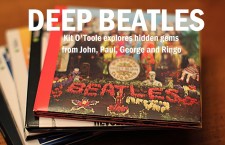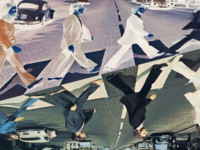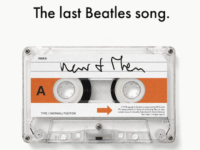Abbey Road found the Beatles ostensibly coming together — even though, once side one is done, there is very little overt John Lennon sprinkled throughout the rest.
Try as he might, Abbey Road (released on Sept. 26, 1969) is no Paul McCartney record. Sure, this is among McCartney’s brightest, most artistically satisfying, moments. But it’s Lennon’s punctuations (and, to a quickly emerging degree, George Harrison’s), undoubtably, that make it so.
It’s easy to unfairly narrow the critical scope, since McCartney’s most cohesive medley can be found as part of the second half of Abbey Road. Yet, the enduring magic here only grows more impressive after hearing similarly constructed John Lennon-less also-ran attempts from solo projects like Ram and Red Rose Speedway. There is a missing balance achieved here. Moreover, Abbey Road was the album where George Harrison’s latent potential finally was realized — to the tune of an A-side No. 1 hit in “Something” and the lilting, uplifting “Here Comes the Sun.”
Moments away from imploding, they arrived for these sessions as distinct individuals, rather than stylized mop tops. Yet, for a moment in time and for this one last time, the Beatles’ separate personalities seemed to work again in service of the whole. Their strengths served to strengthen one another. After the disastrous Get Back sessions, we could scarcely have expected one of the Beatles’ most gorgeous shared harmonies on “Because,” or Ringo Starr taking a self-deprecating solo, or these relentlessly traded guitar solos — with Lennon simply buffeting the rest — on Paul McCartney’s closing peace-loving Vietnam-era message called “The End.”
And in the end, those moments added emotional weight to Abbey Road, the last album the Beatles ever recorded together. At the same time, while it’s loosely conceptual, this one outstrips Sgt. Pepper’s Lonely Hearts Club Band because Abbey Road was not locked into a Big Idea. And the thing rocks a good bit more — in particular on side one, where John Lennon dominates (“Come Together,” “I Want You.”)
Then, there are the album’s embedded, fizzy little surprises, concluding with the snippet titled “Her Majesty.” Going back to side one, however, I’ll never forget the first time I heard the Beatles’ Abbey Road back in the original vinyl days. When “She’s So Heavy” ground down to that abrupt halt, I thought my turntable had skipped. I jumped up and put the needle back down. SHEEEEESH-quiet. Again. SHEEEEESH-quiet. Again. SHEEEEESH-quiet.
A smile curled up my face.
- How Deep Cuts on ‘Music From Big Pink’ Underscore the Band’s Triumph - July 31, 2023
- How ‘Islands’ Signaled the Sad End of the Band’s Five-Man Edition - March 15, 2022
- The Band’s ‘Christmas Must Be Tonight’ Remains an Unjustly Overlooked Holiday Classic - December 25, 2016




